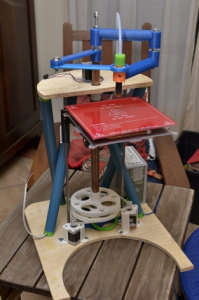This is the sort of story that gives you hope. Click through and go to the bottom to see the video.
18-year-old’s Breakthrough Invention can Recharge Phones in Seconds
Stephen C. Webster – The Raw Story
Here is an extraordinary physics story, moving us just a little closer to the nonlocal. I think the last five hundred years will one day be seen in one important sense as the evolution from materiality to the nonlocal.
Particle vs. Antiparticle
LISA GROSSMAN – New Scientist/Slate
Why does humanity consensually measure seven days to a week? We use the model so universally that it is invisible as a shared intention. Breaking up time this way is entirely arbitrary. Here's why we do it. It is a perfect illustration of how nonlocal information architectures are created, and come to constitute reality.
The Power of Seven
The Economist (U.K.)
Here is an extraordinary physics story, moving us just a little closer to the nonlocal. I think the last five hundred years will one day be seen in one important sense as the evolution from materiality to the nonlocal.
Particle vs. Antiparticle
LISA GROSSMAN – New Scientist/Slate








